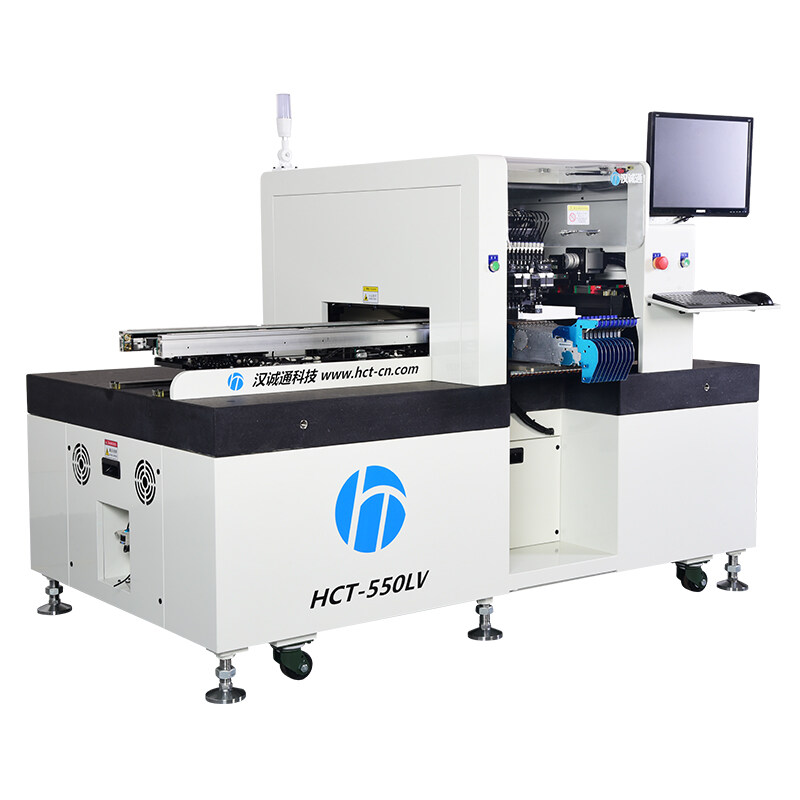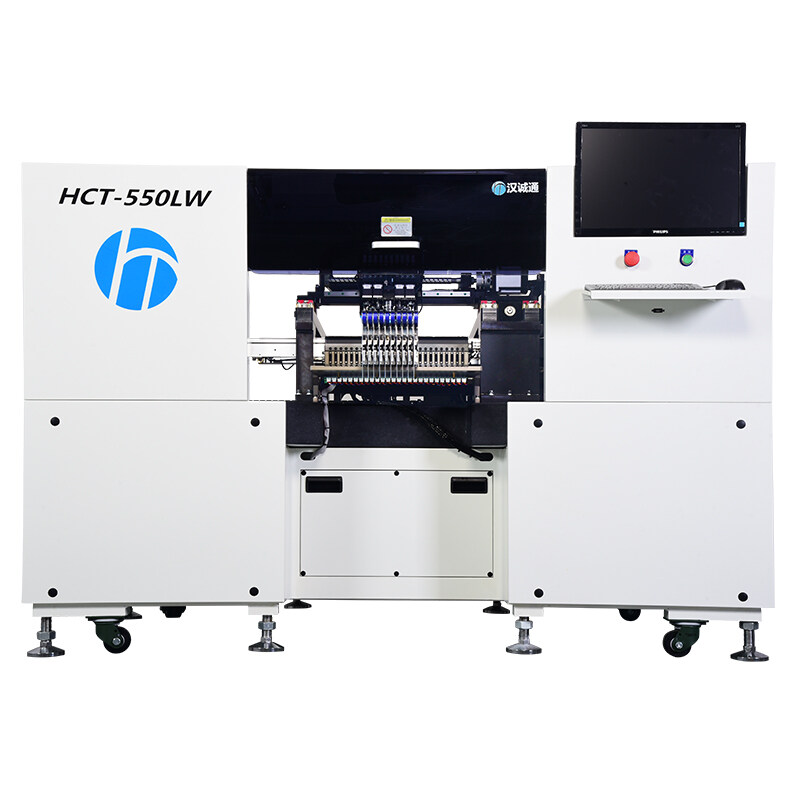Email format error
Email cannot be empty
Email already exists
6-20 characters(letters plus numbers only)
The password is inconsistent
Email format error
Email cannot be empty
Email does not exist
6-20 characters(letters plus numbers only)
The password is inconsistent


Exploring Automatic LED Pick and Place Machines
In the world of electronics, efficiency and precision are key. This is especially true in the LED manufacturing industry, where components must be assembled with the utmost care and accuracy. This is where automatic LED pick and place machines come into play. These machines are transforming the way LED lights and related components are assembled, speeding up production while ensuring a high level of quality. Let’s dive into why these machines are essential in modern LED assembly lines, and how they are changing the game for manufacturers.
What is an Automatic LED Pick and Place Machine?
At its core, an LED pick and place machine is an automated system designed to place LED components onto a PCB (printed circuit board) with high precision. Think of it like a super-efficient robot with a lot of dexterity, capable of picking up tiny components and placing them exactly where they need to be, all while working at lightning speed.
These machines use a combination of advanced vision systems, robotic arms, and precise motors to ensure that each LED is placed accurately on the PCB. The term "pick and place" refers to the process where the machine picks up the component from a feeder and places it onto the board. This eliminates the need for manual labor, reducing the likelihood of human error and increasing overall efficiency.
Why You Need an Automatic LED Pick and Place Machine
1. Increased Speed and Efficiency
One of the most significant benefits of using an automatic SMD pick and place machine is the speed it brings to the table. Manual assembly of LEDs onto a PCB is a time-consuming process, especially when it comes to small components. With an automatic machine, the assembly process becomes much quicker, allowing manufacturers to produce more units in less time.
This increase in speed doesn’t just affect productivity—it also leads to cost savings. By reducing assembly time, you lower labor costs and minimize the risk of defects, which can be costly to fix.
2. Improved Precision and Accuracy
When you’re dealing with delicate LED components, precision is a must. An automatic LED assembly equipment can place components with an accuracy that far surpasses human capability. The automated system ensures that each component is positioned perfectly, preventing issues like poor soldering or misalignment that could affect the performance of the LED.
These machines are equipped with high-tech cameras and sensors that continuously check the placement of each component in real time. This means that any errors can be caught immediately, allowing for rapid correction and preventing large-scale defects down the line.
3. Reduced Labor Costs
Another advantage of automated LED assembly machines is the significant reduction in labor costs. Traditionally, assembling LEDs by hand requires skilled workers who are often paid higher wages. With a pick and place machine, much of the labor is taken off human hands, allowing for a leaner workforce and ultimately saving money for the manufacturer.
In addition, automation can help improve workplace safety by reducing the physical strain on employees who would otherwise spend hours in repetitive tasks.
4. Flexibility and Customization
Many automatic LED pick and place machines are highly customizable to meet the needs of different production lines. Whether you’re assembling high-power LEDs for street lights or smaller LEDs for devices like smartphones, these machines can be easily adjusted to accommodate a variety of components and production scales.
You can also change the configuration of the machine to support different PCB sizes and types, giving manufacturers the flexibility to work with various projects without having to purchase entirely new equipment.
How Automatic LED Pick and Place Machines Work
Now that we understand why these machines are essential, let's take a look at how they operate. While there are many variations, most automatic SMD pick and place machines follow a similar process:
-
Feeding the Components: The machine’s feeders hold the different components that need to be placed. These are often organized in reels or trays. The feeders are set up based on the specific components required for the assembly process.
-
Picking the Components: Using a vacuum nozzle, the machine picks up the LED components from the feeder. The nozzle is carefully controlled by the machine’s robotic arms to ensure that the right component is selected.
-
Placing the Components: Once the component is picked up, it is precisely placed on the PCB. The machine uses advanced vision systems to confirm the exact location for placement, ensuring perfect alignment with the PCB.
-
Soldering the Components: After placement, the components are soldered into place through reflow soldering or another method. This is typically the final step in the assembly process.
-
Inspection and Quality Control: Finally, the assembled PCB is inspected for any defects. High-end automatic LED assembly equipment often includes automated optical inspection systems to catch any potential mistakes before the final product is shipped out.
Types of Automatic LED Pick and Place Machines
There are several types of automatic LED pick and place machines designed for different needs:
-
High-Speed Machines: These machines are built for speed and can handle a large volume of components in a short amount of time. They are ideal for mass production of LED products like light bulbs or signage.
-
Precision Machines: These are designed for more delicate applications where placement accuracy is critical. Precision machines are typically used for smaller, high-end LEDs, such as those found in smartphones or medical devices.
-
Multi-Head Machines: These machines come with multiple heads that can place several components at once. This increases throughput and is ideal for assembly lines that need to process a wide variety of components in a short amount of time.
Future Trends in LED Pick and Place Technology
The future of automatic LED pick and place machines looks bright (pun intended!). As technology continues to advance, we can expect several exciting developments in this field:
-
AI and Machine Learning: Many machines are beginning to integrate artificial intelligence (AI) and machine learning algorithms, allowing them to improve their performance over time. These systems can analyze production data and make real-time adjustments to optimize efficiency and quality.
-
Smaller and More Compact Machines: As the demand for smaller, more portable devices grows, pick and place machines are becoming more compact and capable of handling tiny components with greater precision.
-
Collaborative Robots: The rise of collaborative robots (or cobots) means that pick and place machines will work alongside human operators, enhancing flexibility in production and allowing workers to focus on tasks that require human expertise.
Why Invest in an Automatic LED Pick and Place Machine?
In a competitive industry like LED manufacturing, adopting cutting-edge technology like automatic LED pick and place machines is a no-brainer. They boost efficiency, reduce errors, and save costs while improving overall production quality. Whether you're working with large-scale, high-power LEDs or tiny, intricate components, these machines can adapt to your needs, driving the future of LED assembly forward.
If you manufacture LED products, think about moving to automation. It’s a good investment that can lead to more production, lower costs, and better quality. With the correct automatic LED assembly equipment, you’ll be ready to meet the needs of a changing industry.


